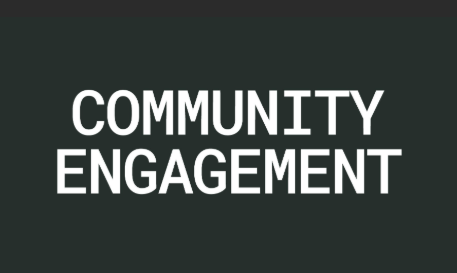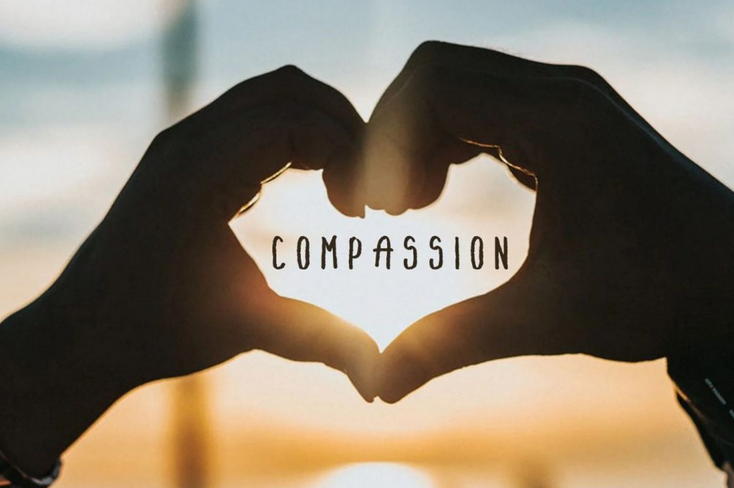“If you want others to be happy, practice compassion. If you want to be happy, practice compassion.”
Dalai Lama
Compassionate living is a lifestyle that emphasizes empathy, kindness, and the desire to alleviate suffering. It involves making conscious choices to act with compassion towards oneself, others, and the environment in everyday life. It involves making conscious choices to act with compassion towards oneself, others, and the environment in everyday life.
“Compassion is the wish to see others free from suffering.”
Dalai Lama

Key Elements of Compassionate Living

Empathy and Understanding:
Empathy is the ability to understand and share the feelings, thoughts, and experiences of another person. It involves putting oneself in someone else’s shoes and experiencing the world from their perspective.
“Empathy is about finding echoes of another person in yourself.”
Mohsin Hamid

Understanding refers to the ability to comprehend another person’s emotions, thoughts, and experiences. It involves recognizing their perspective and responding with insight and compassion. Recognizing and understanding the feelings and experiences of others. This involves actively listening, putting yourself in others’ shoes, and responding with care.
“Empathy is seeing with the eyes of another, listening with the ears of another and feeling with the heart of another.”
Alfred Adler

Cognitive Empathy also known as “perspective-taking,” is the ability to understand and intellectually comprehend another person’s thoughts, feelings, and perspectives. It involves recognizing and appreciating someone else’s mental and emotional state without necessarily sharing the same emotions. Cognitive empathy is an essential skill for building strong relationships, resolving conflicts, and creating a supportive and understanding environment. It allows us to connect with others on an intellectual level, fostering a deeper sense of connection and collaboration.
“Empathy is the starting point for creating a community and taking action. It’s the impetus for creating change.”
Max Carver

For retirees, practicing cognitive empathy involves using their life experiences and wisdom to connect with and understand others on an intellectual level. This is the intellectual ability to understand another person’s emotional state. It involves recognizing and comprehending others’ feelings and thoughts. Practicing cognitive empathy can lead to more meaningful and fulfilling relationships, enhance communication, and promote personal growth. It allows retirees to leverage their life experiences to connect with others on a deeper level and contribute positively to their community.
“Empathy is the ability to step outside of your own bubble and into the bubbles of other people.”
C. JoyBell

Emotional Empathy is the ability to share and feel the emotions of another person. It involves connecting with someone on an emotional level and experiencing their feelings as if they were your own. Emotional empathy is a powerful tool for building strong, meaningful relationships and creating a compassionate and supportive environment. It allows us to connect with others on a deeper level, fostering trust and understanding.
“Empathy is a choice, and it’s a vulnerable choice. Because in order to connect with you, I have to connect with something in myself that knows that feeling.”
Brené Brown
For retirees, practicing emotional empathy involves connecting with others on an emotional level, using their life experiences and wisdom to understand and relate to the feelings of others. This is the capacity to physically feel what another person is experiencing. It involves sharing and mirroring their emotions.
“Empathy represents the foundation skill for all the social competencies important for work.”
Daniel Goleman

Compassionate Empathy also known as “empathic concern,” goes beyond simply understanding and sharing the feelings of another person. It involves not only recognizing and feeling their emotions but also being motivated to take action to help alleviate their suffering. It combines the elements of cognitive and emotional empathy with a strong desire to support and help others. Compassionate empathy is a powerful force for good, creating a more caring and supportive world. It combines the emotional connection of empathy with the proactive desire to help others, leading to positive outcomes for both individuals and communities.
“Empathy is the antidote to shame. The two most powerful words when we’re in struggle: ‘me too.”
Brené Brown
For retirees, practicing compassionate empathy means using their time, experience, and resources to connect with others on an emotional level and provide meaningful support. This goes beyond understanding and sharing feelings; it involves taking action to help alleviate another person’s suffering.
“Empathy and compassion will ultimately help us see ourselves in others.”
David Harris

Perspective-Taking is the ability to understand and consider the thoughts, feelings, and viewpoints of others by seeing a situation from their perspective. It involves stepping outside of one’s own experiences and imagining how someone else perceives and experiences the world. Perspective-taking is a vital skill for building strong, meaningful relationships and creating a supportive and understanding environment. It allows us to connect with others on a deeper level, fostering empathy, compassion, and effective communication.
“You never really understand a person until you consider things from his point of view… Until you climb inside of his skin and walk around in it.”
Harper Lee, To Kill a Mockingbird
Perspective-taking is the ability to understand and consider the thoughts, feelings, and viewpoints of others by seeing a situation from their perspective. For retirees, this involves using their life experiences and wisdom to connect with and understand others, fostering empathy and deeper relationships. This is the ability to see a situation from another person’s viewpoint and understand their experience.
“Most people do not listen with the intent to understand; they listen with the intent to reply.”
Stephen R. Covey

Active Listening is the process of fully concentrating, understanding, responding, and remembering what another person is saying. It involves giving your full attention to the speaker, demonstrating genuine interest, and engaging in a meaningful conversation. For retirees, active listening involves using their life experiences and wisdom to engage in meaningful conversations, showing genuine interest and support. Active listening is the process of fully concentrating, understanding, responding, and remembering what another person is saying.
“Too often we underestimate the power of a touch, a smile, a kind word, a listening ear, an honest compliment, or the smallest act of caring, all of which have the potential to turn a life around.”
Leo Buscaglia

Acts of Kindness are thoughtful, selfless actions aimed at helping or uplifting others without expecting anything in return. These actions, whether small or significant, demonstrate care, compassion, and generosity. Acts of kindness don’t require grand gestures or significant resources. They can be simple, everyday actions that have a profound impact on both the giver and receiver. Engaging in regular acts of kindness, whether through small gestures or larger efforts, can improve the well-being of others. Acts of kindness for retirees involve thoughtful, selfless actions aimed at helping others and enhancing their own sense of purpose and fulfillment. These actions leverage the time, experience, and resources available during retirement to positively impact individuals and the community.
“Mindfulness is a way of befriending ourselves and our experience.”
Jon Kabat-Zinn

Mindfulness is the practice of being fully present and engaged in the current moment, with a non-judgmental awareness of your thoughts, feelings, and surroundings. It involves paying deliberate attention to your experiences and accepting them as they are, without trying to change or judge them. For retirees, mindfulness involves using their time and experience to cultivate a sense of inner peace, relaxation, and appreciation for life’s simple pleasures. Be present and aware of the impact of your actions on yourself and others. This includes being mindful of your thoughts, words, and behaviors.
“Self-compassion is simply giving the same kindness to ourselves that we would give to others.”
Christopher Germer

Self-Compassion involves treating yourself with the same kindness, understanding, and care that you would offer to a friend. It means recognizing your own suffering, offering support and empathy to yourself, and acknowledging your own humanity and imperfections. For retirees, self-compassion means embracing this stage of life with empathy, accepting any challenges or changes, and nurturing your well-being.
“Self-compassion is not a way of being selfish; it’s a way of being wise.”
Unknown
Self-compassion is a powerful practice that can enhance your overall well-being and create a foundation for a happier, more fulfilling life. It involves treating yourself with the same care and understanding that you would extend to others. Treating yourself with the same kindness and understanding that you extend to others is very important. This involves practicing self-care and self-acceptance.
“What we do makes a difference, and we have to decide what kind of difference we want to make.”
Jane Goodall

Sustainable Living is a lifestyle that seeks to reduce an individual’s or society’s use of the Earth’s natural resources and personal resources. It involves making choices that ensure the long-term health and well-being of the planet, people, and communities. For retirees, sustainable living involves making conscious choices that ensure the long-term health and well-being of the planet, while also enhancing their quality of life during retirement. Making choices that are environmentally friendly and promote the well-being of the planet are so valuable. This includes reducing waste, conserving resources, and supporting sustainable practices.
“Community is much more than belonging to something; it’s about doing something together that makes belonging matter.”
Brian Solis

Community Engagement is the process of working collaboratively with community members to address issues, create opportunities, and promote the well-being of the community. It involves actively participating in and contributing to the community to foster positive change, build relationships, and create a sense of belonging. Community engagement for retirees involves actively participating in and contributing to community activities, initiatives, and events. It fosters positive change, builds relationships, and creates a sense of belonging, all while leveraging the time, experience, and wisdom that retirees bring to the table.
“The power of community to create health is far greater than any physician, clinic or hospital.”
Mark Hyman

Actively participating in and contributing to your community can be very rewarding. This can involve volunteering, supporting local initiatives, and fostering connections with others. Community engagement for retirees is a powerful way to create positive change, build strong relationships, and enhance the well-being of both individuals and the community as a whole. It leverages the experience and wisdom gained over a lifetime to make a meaningful impact.
“There is no power for change greater than a community discovering what it cares about.”
Margaret J. Wheatley
In summation, compassionate living is about making conscious choices to act with empathy, kindness, and the intention to help alleviate the suffering of others. This lifestyle fosters a sense of connection, purpose, and overall well-being. Compassionate living is a powerful way to create positive change in your life and the lives of others. It fosters a sense of interconnectedness and promotes a more compassionate and supportive world.





